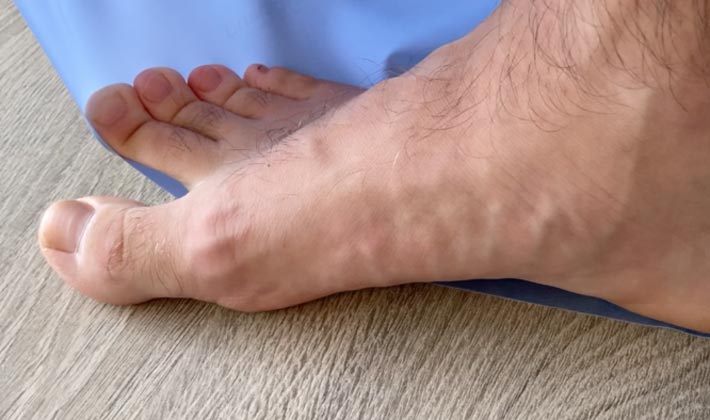As warm weather and sunshine returns to Canada so do summer wardrobes, flip-flops and sandals. Some people enjoy going barefoot more often than they are used to and who can blame them?! Personally I love the feeling of grass under my feet and mud squishing between my toes.
One condition that pedorthists see frequently in the summer months is a condition that we like to call ‘seasonal barefoot-itis’. Folks who normally wear footwear most of the time are now wearing sandals and are going barefoot and they come into clinics with aches and pains in the toes, feet, knees and low-back.
Here are three simple exercises that can fine-tune some of the muscles in your feet and ankles to prepare yourself for sandal and barefoot season.
- Calf raises. Standing on both feet, slowly raise your heels off the ground as high as you can and hold this position for 5 seconds. Slowly lower your heels to the ground. Touch the ground (do not rest) and repeat. This is strengthening muscles in your calf as well as the arch of the foot.

- Single-leg balance. While holding something sturdy, stand on one leg. Close your eyes and focus all your mental awareness on the pressure on the bottom of your foot and the contractions of your muscles in your feet and ankles. Try your best to completely stabilize your ankle without twitching side-to-side. If you find this easy, put a slight bend in your knee to make things a little trickier. This is more of an exercise for your brain than for your ankle muscles. Your brain is trying to find the perfect position for balance without using your eye-sight as a short-cut. This is training your nervous system! A healthy neural connection between the brain and your feet will keep you balanced and avoid injuries.
- Toe-curls. For this one you will need a stretchy exercise band. Sit in a chair so that your knee and ankle are at 90 degree angles. Place the band underneath your foot from heel to toe. Ensure that your small toes are on the band, and your big toe is off to the side of the band, firmly on the ground. The end of the band should stretch from your toes to about your knee. Keep your heel, big toe, and the ball of your foot firmly on the ground and allow the stretchy band to pull your toes up in the air. Now, while keeping your toes straight, contract (or curl) your toes to the ground. Hold for 5 seconds and slowly allow the band to bring your toes back up into the air. Repeat.
The number of recommended repetitions and sets of these exercises is different for everyone. As a general rule, if you find yourself getting tired and unable to perform the technique of the exercise or hold it in the correct position, you should stop and record that number. The next time you workout try to match that number or surpass it by 1-2 repetitions. Remember, these are introductory exercises and you will master them within a few weeks. Your local pedorthist or physical therapist can guide you on how to improve upon these basic exercises.
Always keep in mind that if you are used to wearing supportive footwear and orthotic devices, you are going to need several weeks to get used to being barefoot, even for short periods of time. The feet need time to adapt to this change in pressure on the bones and load on the muscles of the foot and ankle. Start slow and gradually increase your time in sandals or barefoot. If you run into problems or encounter any new aches or pains, always consult your local pedorthist who will have the best understanding of your individual biomechanics and what you can and cannot tolerate.
by Brandon Nethercott, R. Kin, C. Ped (C)
